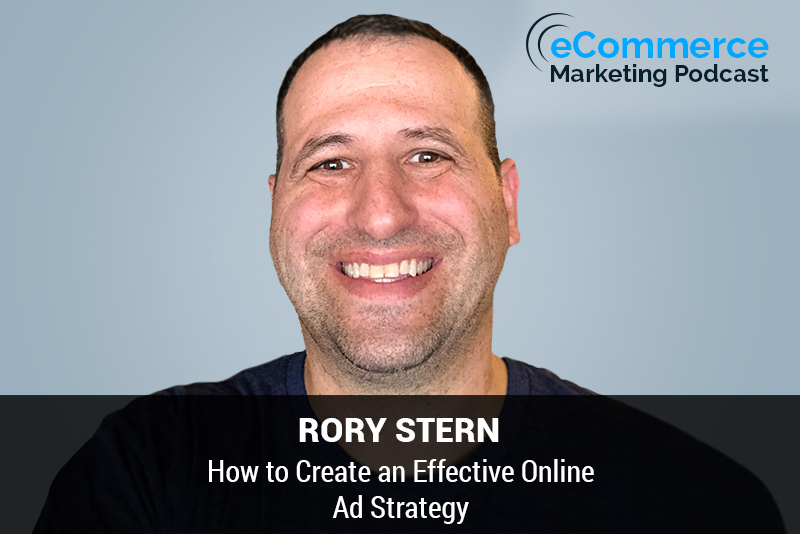
The eCommerce Marketing Podcast walks you through everything that goes into ecommerce marketing — from inbound marketing to paid advertising to conversions. Learn the strategies top marketing experts use to grow their businesses.
Marketing Strategies Revealed in this Episode:
- What should an ecommerce business first do when considering an online ad strategy
- How does a business determine which channels are right for them
- Ways to structure ad content and graphics
- How do you determine an appropriate ad budget that will get you the best ROI
- Recent changes that Google has made with respect to how they present online ads that everyone should be aware of

Episode Title: Creating an Effective E-commerce Online Ad Strategy
Guest: Rory F. Stern, Founder of RFS Digital Media
In this episode of the eCommerce Marketing Podcast, Arlen Robinson hosts Rory F. Stern, the Founder of RFS Digital Media. Rory, an expert in creating high-converting ads and managing policy-challenged offers on Facebook, shares his insights on developing a successful online ad strategy for eCommerce businesses. The conversation covers the importance of understanding your business’s goals, choosing the right advertising channels, and structuring ads to maximize conversions.
Key Takeaways:
- Rory’s Background and Entry into Digital Marketing (00:02:00):
- Transitioned from a clinical psychology doctorate to online marketing, emphasizing the value of paid traffic for scalable business growth.
- Getting Started with Online Advertising (00:08:00):
- Importance of understanding why you’re getting into paid ads and defining your business goals beyond just making a profit.
- Choosing the Right Advertising Channels (00:12:00):
- Facebook as the go-to platform for quick data and ease of use.
- Importance of Google Ads, particularly brand search campaigns for building trust.
- Structuring Effective Ads (00:20:00):
- Emphasis on demonstrable products through videos and images.
- Tips for creating compelling ad content that showcases product benefits and user outcomes.
- Setting the Right Budget (00:28:00):
- Start with a minimum of $150 per day to gather sufficient data.
- Analyze key performance indicators and adjust based on customer acquisition costs.
- Scaling Ad Spend (00:35:00):
- Increase budget based on consistent and sustainable customer acquisition costs.
- Focus on improving average order value and lifetime customer value.
- Upcoming Changes in Online Advertising (00:42:00):
- Impact of privacy and security changes on retargeting.
- Importance of adapting to new data regulations and focusing on customer value.
Guest Information:
- Name: Rory F. Stern
- Position: Founder of RFS Digital Media
- Contact: HelpWithAds.com











